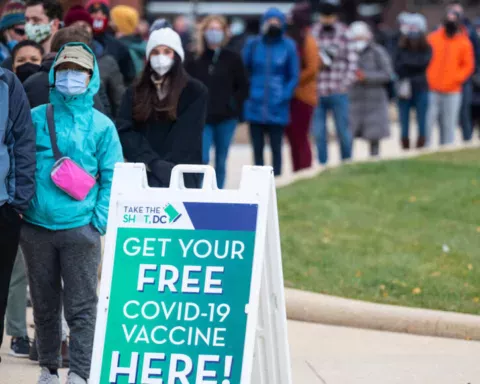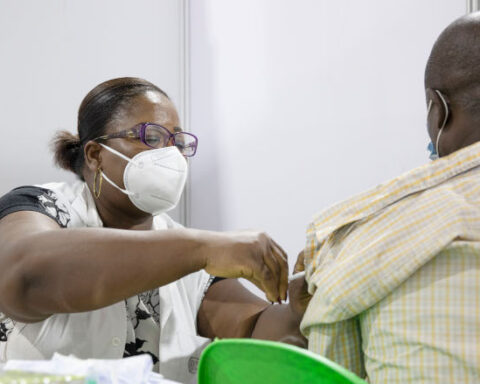This is guidance that applies to England only. If you live in an area where local restrictions are in place you should also consult the local restrictions guidance, for information about what you can and can’t do to manage the outbreak.
It is critical that everybody observes the following key behaviours:
- HANDS – Wash your hands regularly and for 20 seconds.
- FACE – Wear a face covering in indoor settings where social distancing may be difficult, and where you will come into contact with people you do not normally meet.
- SPACE – Stay 2 metres apart from people you do not live with where possible, or 1 metre with extra precautions in place (such as wearing face coverings or increasing ventilation indoors).
1. Social distancing
To reduce the risk of catching or spreading coronavirus, try to keep at least 2 metres away from people you do not live with. Social distancing is essential to stop the spread of the virus, as it is more likely to spread when people are close together. An infected person can pass on the virus even if they do not have any symptoms, through talking, breathing, coughing or sneezing.
When with people you do not live with, you should also avoid: physical contact; being close and face-to-face; and shouting or singing close to them. You should also avoid crowded areas with lots of people; and touching things that other people have touched.
Where you cannot stay 2 metres apart you should stay more than 1 metre apart, as well as taking extra steps to stay safe. For example:
- wear a face covering: on public transport and in many indoor spaces, you must wear a face covering by law, unless you are exempt
- move outdoors, where it is safer and there is more space
- if indoors, make sure rooms are well ventilated by keeping windows and doors open
You do not need to socially distance from anyone in your household, meaning the people you live with. You also do not need to socially distance from someone you’re in an established relationship with, or anyone in your legally-permitted support bubble if you are in one.
It may not always be possible or practicable to maintain social distancing when providing care to a young child, or person with a disability or health condition. You should still limit close contact as much as possible when providing these types of care, and take other precautions such as washing hands and opening windows for ventilation.
2. Seeing friends and family
When seeing friends and family you do not live with you should:
- meet in groups of 6 or less
- follow social distancing rules when you meet up
- limit how many different people you see socially over a short period of time
- meet people outdoors where practical: meeting people outdoors is safer than meeting people indoors because fresh air provides better ventilation
Limits on the number of people you can see socially have changed. When meeting friends and family you do not live with (or have formed a support bubble with) you must not meet in a group of more than 6, indoors or outdoors. This is against the law and the police will have the powers to enforce these legal limits, including to issue fines (fixed penalty notices) of £200, doubling for further breaches up to a maximum of £6,400.
Government has announced an initial £60 million to support additional enforcement activity undertaken by local authorities and the police, in addition to funding that has already been awarded.
There are exceptions where groups can be larger than 6 people. These include:
- for work, or the provision of voluntary or charitable services
- registered childcare, education or training
- supervised activities provided for children, including wraparound care, youth groups and activities, and children’s playgroups
- providing support to a vulnerable person
- providing emergency assistance, and to avoid injury or illness or to escape risk of harm
- for arrangements where children do not live in the same household as both their parents
- fulfilling a legal obligation, such as attending court or jury service
- elite sporting competition and training
- wedding and civil partnership ceremonies and receptions – up to 15 people
- funerals – up to 30 people. This does not include wakes, other than for religious ceremonial purposes
- exercise classes, organised outdoor sport or licensed outdoor physical activity, and supervised sporting activity (indoors or outdoors) for under-18s
- indoor organised team sports for disabled people
- support groups of up to 15 participants – formally organised groups to provide mutual aid, therapy or any other form of support. This includes support to victims of crime, recovering addicts, new parents, people with long-term illnesses, those facing issues relating to their sexuality or gender, and those who have suffered bereavement.
- protests – if organised in compliance with COVID-19 Secure guidance. All individuals must be socially distanced
Where a group includes someone covered by such an exception (for example, someone who is working), they are not counted as part of the gatherings limit. This means, for example, a tradesperson can go into a household of six without breaching the limit, if they are there for work.
More information can be found on our Frequently Asked Questions page.
3. Rules in other venues and activities
As well as the exemptions above, venues following COVID-19 Secure guidelines will be able to continue to host more people in total – such as religious services in places of worship – but no one should mix in a group of greater than 6. This includes places like a pub, shop, leisure venue, restaurant or place of worship. When you visit one of these places you should:
- follow the limits on the number of other people you should meet with as a group – no more than 6 people unless you all live together (or are in the same support bubble)
- avoid social interaction with anyone outside the group you are with, even if you see other people you know
- ensure that at least one person in your group provides their contact details to the organiser so that you can be contacted if needed by the NHS Test and Trace programme. Checking in using the official NHS QR code is a quick and easy alternative.






